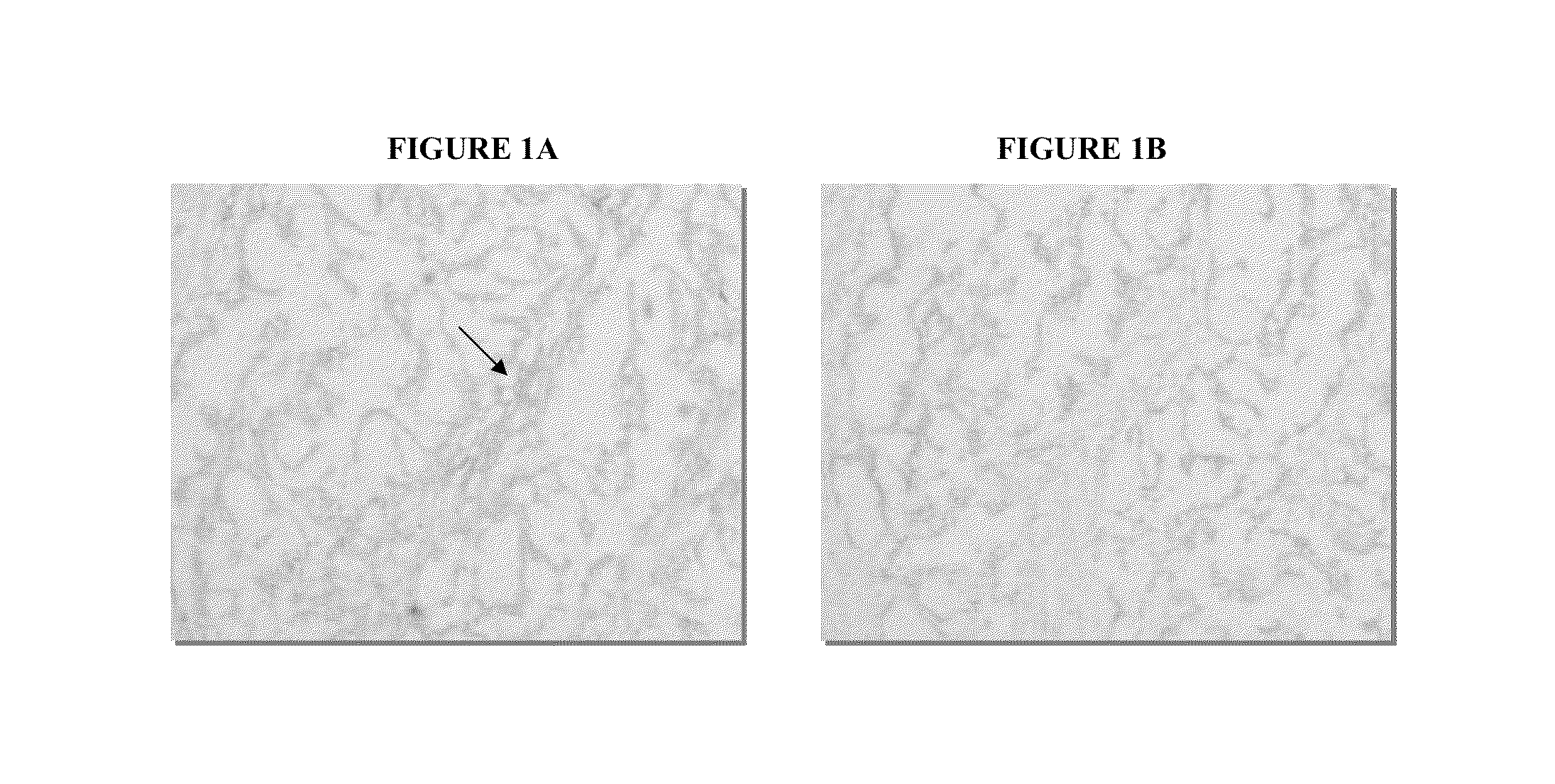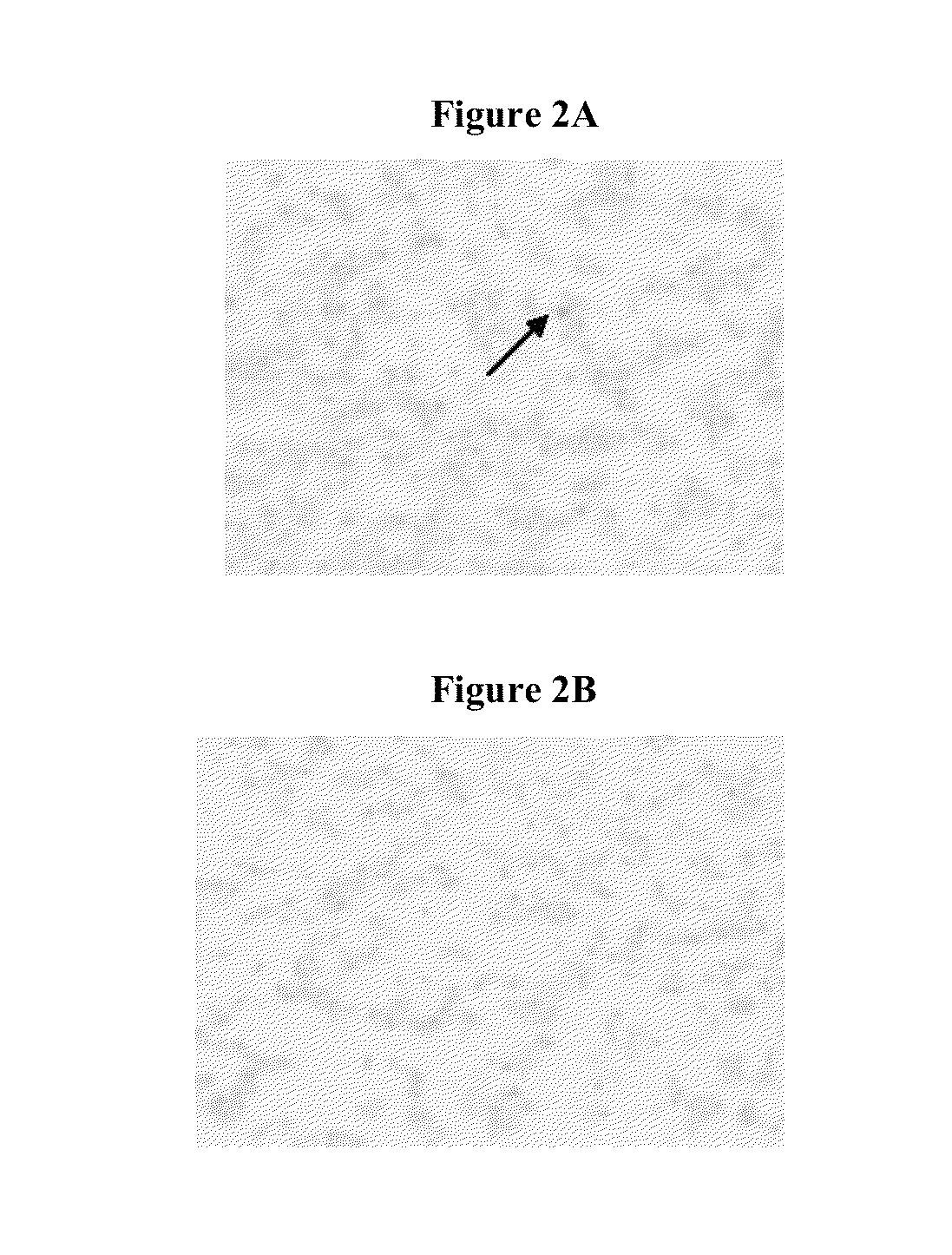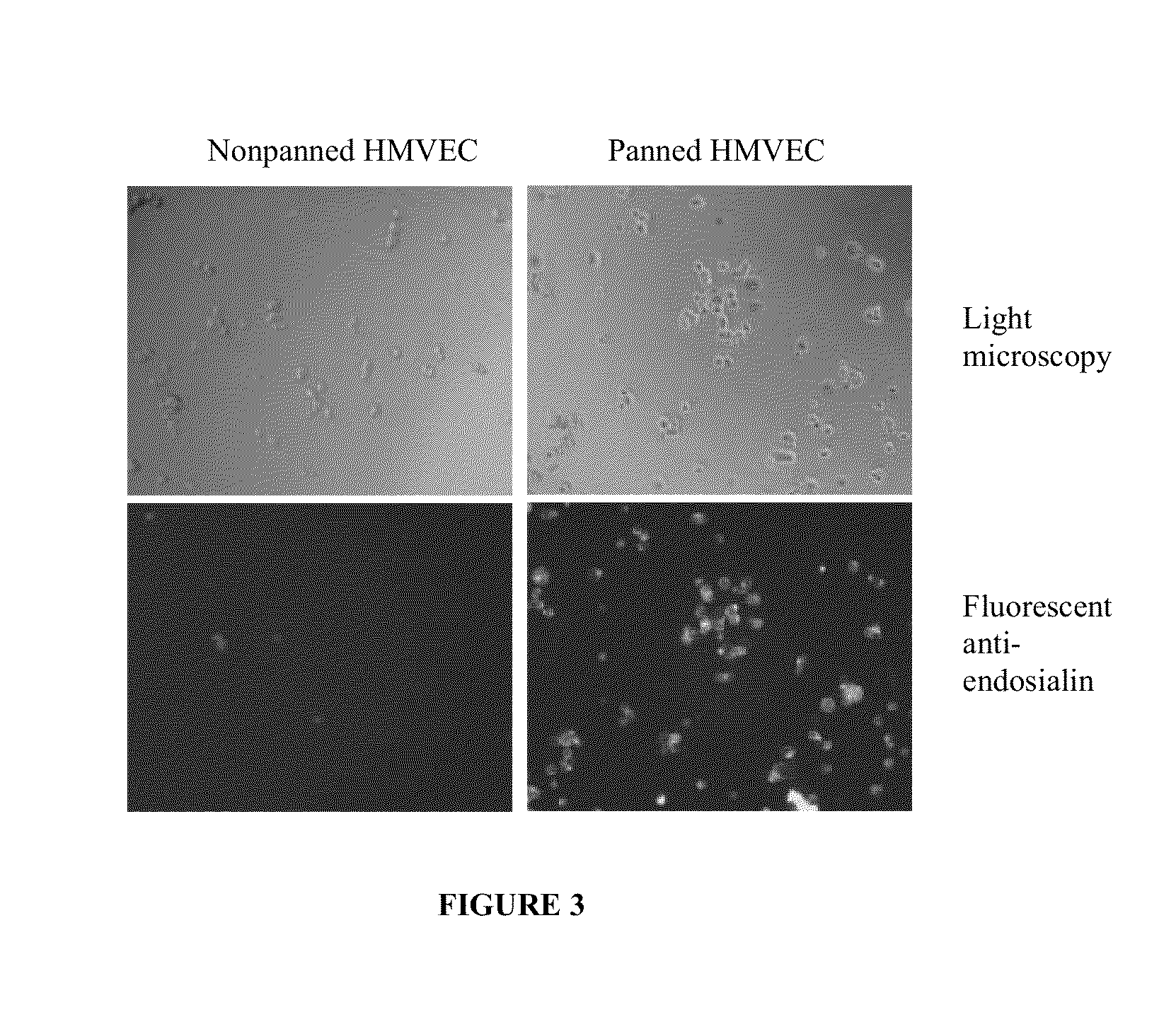Methods for inhibiting the binding of endosialin to ligands
a technology of endosialin and binding ligands, which is applied in the field of immunotherapy, can solve the problems of non-defined biological processes of molecules, and achieve the effects of inhibiting cell motility, inhibiting cell migration, and inhibiting activation or expression
- Summary
- Abstract
- Description
- Claims
- Application Information
AI Technical Summary
Benefits of technology
Problems solved by technology
Method used
Image
Examples
example 1
Immunohistochemistry Analysis of Endosialin Expression on Malignant Tissue
[0134]Use of antibodies to detect endosialin-expressing cells was shown by immunohistochemistry of malignant tissues. The anti-endosialin or normal IgG antibody was applied to freshly frozen human colorectal cancer tissues at two concentrations (0.5 μg / mL and 2.5 μg / mL). Phosphate-buffered saline [PBS (0.15M NaCl, pH 7.2)]+1% bovine serum albumin served as the diluent for the primary antibodies. Tissues were embedded in Tissue-Tek® O.C.T. medium, frozen on dry ice, and stored in sealed plastic bags below −70° C. Tissues were sectioned at approximately 5 μm, and fixed for 10 minutes in room temperature acetone. Slides were stored below −70° C. until staining Just prior to staining, slides were fixed for 10 seconds in 10% neutral-buffered formalin.
[0135]Cryosections were rinsed twice in phosphate-buffered saline (PBS [0.15M NaCl, pH 7.2]). Endogenous peroxidase was blocked by incubating the slides with the perox...
example 2
Immunohistochemistry Analysis of Endosialin Expression on Healthy Tissue
[0136]Use of antibodies to detect endosialin-expressing cells was shown by immunohistochemistry of normal tissues. Briefly, normal tissue specimens were sectioned by cryostat and analyzed for endosialin expression as described above. Normal tissues contained very few fibroblast / dendritic-like cells that expressed endosialin albeit not as robustly or homogenously as was observed in the vessels within tumors (FIGS. 2A and B). These cells are useful to study the effects of neovascularization and can be isolated for gene expression to study profiles of cell growth, differentiation, migration or signature identification. They can be studied in vivo, ex vivo or in vitro using methods known by those skilled in the art as well as those listed below.
example 3
Isolation and Enrichment of Endosialin-Expressing Cells
[0137]To demonstrate that proteins that can bind to endosialin serve as an effective way to enrich for endothelial or fibroblast-like endosialin-expressing cells, Human Microvascular Endothelial Cells (HMVECs) were panned using an antibody that can bind to endosialin to isolate an enriched population of endosialin-expressing cells from a starting pool containing 5-10% endosialin-expressing cells. Not wanting to be bound by the method or specific reagents below, this example demonstrates the use of endosialin antibodies that can isolate endosialin expressing cells.
[0138]Briefly, 96-well plates were coated in sterile conditions with goat anti human IgG Fcγ. Next, 20 μg / ml of a human anti-endosialin antibody M4 was added to the plates and three wells (A, B, C) as controls without the antibody and incubated for 1 hr at 4° C. HMVECs were harvested from 10 cm petri dish cultures with DPBS / EDTA rather than trypsin to avoid any damage t...
PUM
| Property | Measurement | Unit |
|---|---|---|
| dissociation constant | aaaaa | aaaaa |
| dissociation constant | aaaaa | aaaaa |
| dissociation constant | aaaaa | aaaaa |
Abstract
Description
Claims
Application Information
 Login to View More
Login to View More - R&D
- Intellectual Property
- Life Sciences
- Materials
- Tech Scout
- Unparalleled Data Quality
- Higher Quality Content
- 60% Fewer Hallucinations
Browse by: Latest US Patents, China's latest patents, Technical Efficacy Thesaurus, Application Domain, Technology Topic, Popular Technical Reports.
© 2025 PatSnap. All rights reserved.Legal|Privacy policy|Modern Slavery Act Transparency Statement|Sitemap|About US| Contact US: help@patsnap.com



